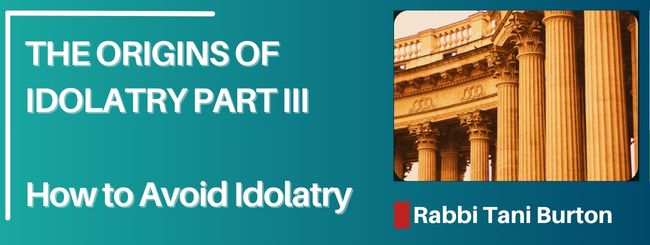בס”ד
Understanding the Prohibitions of Idol Worship: How to avoid idolatry
Idol worship, or Avodah Zarah in Hebrew, is one of the most strictly prohibited actions in Torah law. It extends beyond merely bowing to statues or offering sacrifices to deities. Fundamentally, idol worship is defined as attributing power to anything other than G-d. In this shiur, we will explore the nuances of this prohibition, including the creation, purchase, and display of images and statues that may facilitate idolatry. We will draw from sources such as the Talmud (Sanhedrin 56b), Me’iri, Rambam, and Sefer HaMishneh to clarify these laws and their modern implications.
The Severity of Idol Worship
The Torah treats idolatry as a fundamental transgression, with severe consequences for those who engage in it in the prescribed manner. The Rambam in Laws of Kings and Wars (9:2) emphasizes that even non-Jews (Noahides) are subject to capital punishment if they engage in recognized forms of idol worship. However, if an act does not conform to an established idolatrous practice, while still prohibited, it does not carry the same severe penalty. The four primary actions associated with idol worship, as identified in Torah sources, include:
- Making sacrifices
- Burning incense
- Pouring libations
- Bowing down to the idol
The Me’iri highlights that not all gestures directed toward idols are considered formal worship. Actions such as kissing, hugging, or cleaning an idol are forbidden but do not meet the threshold for capital punishment (Sanhedrin 56b). Rav Papa clarifies that such gestures are exempt from the death penalty unless they align with the traditional mode of service for that idol.
Creating, Purchasing, and Displaying Idolatrous Images
Beyond the act of worship, Halacha (Jewish law) imposes stringent restrictions on objects associated with idol worship. These restrictions apply not only to Jews but also to Noahides. The Torah explicitly forbids the manufacture of images representing deities (Exodus 20:3). Whether or not an individual intends to worship these images, their creation and possession are prohibited.
The Rambam in Laws Concerning Idol Worship explains that even purchasing a statue of an idol is forbidden. Many people unknowingly acquire objects with idolatrous significance as decorations. However, even decorative statues that resemble deities are prohibited due to their potential association with idol worship (Exodus 20:20).
Exceptions and Permitted Images
While the prohibition against images is extensive, Rambam identifies certain exceptions. The only strictly forbidden non-idolatrous statue is a complete, three-dimensional depiction of a human figure. This includes both full-relief statues and engraved images where one side protrudes (Hilchot Avodah Zarah 3:10).
The following are permitted:
- Two-dimensional images, such as paintings or engravings.
- Partial human forms, such as busts or detached limbs.
- Children’s toys and dolls, as they are not considered formal statues.
- Coins and currency with relief images, as they are not created for worship.
- Historical monuments, provided they were not intended for idolatrous practice.
Sacred Structures and Idolatrous Pillars
The Torah also prohibits the erection of monuments or trees associated with idol worship (Deuteronomy 16:21-22). These Asherah trees were commonly planted as sacred objects in ancient idol worship. Similarly, Noahides are forbidden from constructing communal pillars used for idolatrous practices (Leviticus 26:1). However, monuments erected purely for historical purposes, such as national statues or memorials, do not fall under this prohibition.
Ethical and Practical Implications
While we no longer live under a legal system that enforces capital punishment for idolatry, the underlying principles remain relevant. This discussion highlights the importance of mindfulness in our interactions with images, statues, and architectural structures. Here are some key takeaways:
- Understanding the historical and cultural context of idol worship can help us determine the intent behind an image or monument.
- While decorative statues are generally allowed, we should be cautious about inadvertently promoting idolatrous symbols.
- Awareness of religious and cultural sensitivities can help us maintain a clear distinction between permitted artistic expression and prohibited idolatrous representations.
Conclusion
The study of idol worship prohibitions is not merely an exercise in legal analysis but a reminder to remain steadfast in our service to the one true G-d. As the Sefer HaMishneh notes, distinguishing between affectionate gestures and formal worship reinforces the importance of intent and context.
By adhering to these principles, we create an environment that fosters true monotheism, ensuring that our homes and communities reflect the sanctity of divine service. May we all be blessed with the wisdom and clarity to navigate these challenges in our daily lives.
By Rabbi Tani Burton
More shiurim of Rabbi Tani Burton
© Copyright, all rights reserved. If you enjoyed this article, we encourage you to distribute it further.
Our blogs may contain text/quotes/references/links that include copyright material of Mechon-Mamre.org, Aish.com, Sefaria.org, Chabad.org, and/or AskNoah.org, which we use in accordance with their policies.
